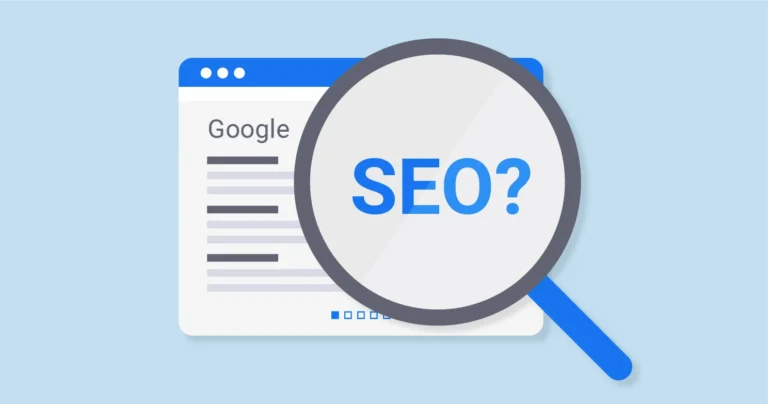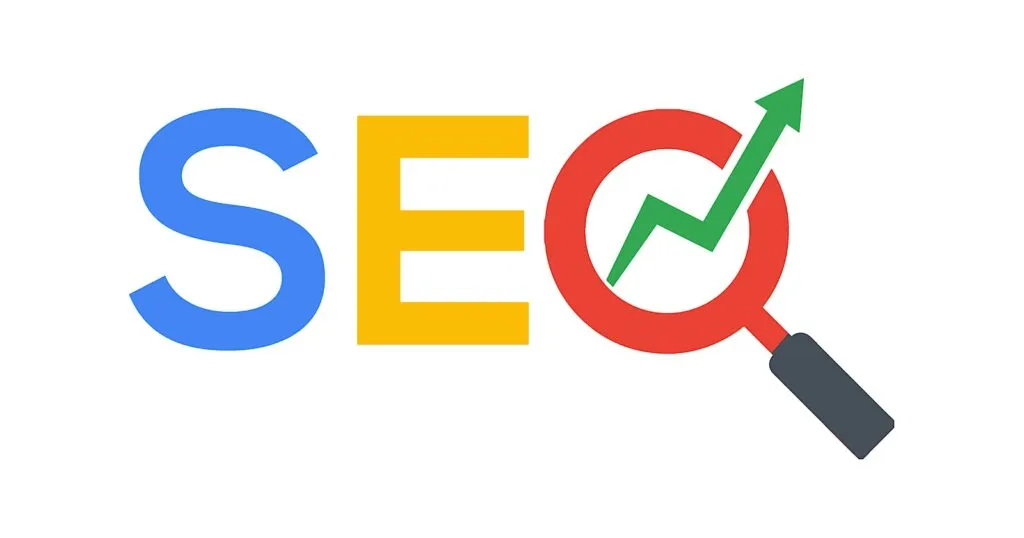What Is SEO and Its Basics: A Guide to Search Engine Optimization
Posted On September 24th, 2025
Array
In this blog, we explore what is SEO, search engine optimization, and its basics to help you understand how to improve your website’s visibility. SEO, or search engine optimization, stands as a crucial practice for anyone who wants to attract more visitors online. Moreover, you will learn the fundamentals of SEO and search engine optimization through simple explanations. Additionally, we cover key concepts like short tail keywords such as “SEO” and long tail keywords like “what is SEO and its basics” to make your content more effective. Therefore, let’s dive right in and discover how SEO, search engine optimization, can transform your online presence.
Understanding SEO: The Foundation of Search Engine Optimization
First, you need to grasp what SEO really means. SEO, which is short for search engine optimization, refers to the process where you optimize your website so that search engines like Google can find and rank it higher in search results. In other words, search engine optimization helps your site appear when people search for terms related to your content. For instance, if you run a blog about cooking, good SEO ensures your recipes show up when someone types “easy pasta recipes.”
Furthermore, SEO involves various strategies that work together. You start by researching keywords, such as short tail keywords like “SEO basics” or long tail keywords like “how to learn search engine optimization for beginners.” Then, you apply these to your content. However, it’s not just about stuffing keywords; instead, you focus on creating valuable information that readers love. As a result, search engines reward your site with better rankings.
To make this clearer, consider why SEO matters today. With billions of websites online, competition is fierce. Therefore, mastering search engine optimization basics allows you to stand out. Moreover, it builds trust with your audience because high-ranking sites often seem more reliable. So, if you want your website to gain authority, start with solid SEO practices.
The Evolution of SEO and Search Engine Optimization Over Time
Next, let’s look at the history of SEO to see how it has changed. In the early days of the internet, around the 1990s, search engine optimization was simple. Webmasters used basic techniques like keyword stuffing to trick search engines. However, as search engines evolved, they got smarter. For example, Google introduced algorithms like PageRank in 1998, which focused on links as a sign of quality.
Consequently, SEO shifted from manipulation to genuine optimization. By the 2000s, professionals began emphasizing user experience in search engine optimization. Additionally, updates like Google’s Panda in 2011 penalized low-quality content, pushing creators to produce helpful material. Therefore, today’s SEO prioritizes mobile-friendliness, speed, and relevance.
Moreover, with the rise of voice search and AI, search engine optimization continues to adapt. You now optimize for long tail keywords like “what is the importance of SEO in digital marketing” because people speak naturally when using devices like Siri. As a result, understanding this evolution helps you apply modern SEO basics effectively.
Why SEO Matters: The Importance of Search Engine Optimization for Your Website
Now, you might wonder why you should invest time in SEO and search engine optimization. Simply put, it drives organic traffic, which means free visitors from search results. For example, if your site ranks on the first page for “SEO tips,” you attract users without paying for ads. Therefore, this saves money while building long-term growth.
Furthermore, good SEO enhances your website’s trustworthiness. Search engines like Google use over 200 factors to rank sites, including content quality and backlinks. As a consequence, when you optimize properly, users see your site as an authority. In addition, SEO improves user experience by making your site faster and easier to navigate.
To illustrate, consider these benefits in points:
- Increased Visibility: SEO helps your content appear in search results for keywords like “search engine optimization basics.”
- Higher Traffic: More visitors mean more opportunities for sales or engagement.
- Better ROI: Unlike paid ads, search engine optimization provides lasting results.
- Competitive Edge: Outrank rivals by using long tail keywords such as “how does SEO work for small businesses.”
- Brand Awareness: Consistent SEO builds recognition over time.
However, ignoring SEO can hurt your site. For instance, poor optimization leads to low rankings, reducing visibility. Therefore, start implementing search engine optimization today to reap these rewards.
How Search Engines Work: A Key Part of SEO Basics
Before diving deeper into techniques, you should understand how search engines operate in the context of SEO and search engine optimization. Essentially, search engines crawl the web, index pages, and rank them based on relevance. First, crawlers like Googlebot visit sites and follow links to discover content.
Then, they index this information in massive databases. When someone searches for “what is SEO,” the engine matches the query to indexed pages. Moreover, it uses algorithms to decide rankings, considering factors like keywords and user intent.
Additionally, search engines prioritize fresh, high-quality content. So, if you update your blog regularly with search engine optimization tips, you improve your chances. However, technical issues like slow loading can harm rankings. Therefore, always test your site for speed.
To break it down further:
- Crawling: Bots scan your site for new pages.
- Indexing: They store data for quick retrieval.
- Ranking: Algorithms evaluate relevance using SEO elements.
- Serving Results: Users see the best matches first.
As a result, mastering these steps ensures your search engine optimization efforts pay off.
Keyword Research: The Heart of SEO and Search Engine Optimization

One of the most important basics in SEO is keyword research. You identify terms people use to find information, like short tail keywords “SEO” or long tail keywords “best practices for search engine optimization.” Tools like Google Keyword Planner help you find these.
First, brainstorm ideas related to your topic. For example, synonyms include “website optimization” or “organic search strategies.” Then, analyze search volume and competition. High-volume short tail keywords like “search engine optimization” are tough, but long tail ones like “SEO for beginners guide” are easier to rank for.
Moreover, incorporate these naturally. However, avoid overdoing it to prevent penalties. Instead, use them in titles, headings, and body text for better search engine optimization.
Here are steps to do keyword research effectively:
- Identify Your Niche: Focus on your audience’s needs.
- Use Tools: Check Ahrefs or SEMrush for data.
- Analyze Competitors: See what keywords they rank for, such as “importance of SEO.”
- Group Keywords: Create clusters around main terms like “SEO basics.”
- Track Performance: Monitor how your search engine optimization keywords perform over time.
Consequently, solid keyword research lays the foundation for successful SEO.
Short Tail vs. Long Tail Keywords in Search Engine Optimization
Now, let’s differentiate between short tail and long tail keywords, as they play a big role in SEO. Short tail keywords, like “SEO” or “search engine optimization,” are broad and have high search volume. However, they face stiff competition.
On the other hand, long tail keywords, such as “what is SEO and how to start with search engine optimization basics,” are specific. They attract targeted traffic with less competition. Therefore, beginners should prioritize long tail ones for quicker wins.
For example, a short tail keyword might bring general visitors, while a long tail one draws ready-to-convert users. Additionally, use both in your content strategy for balanced search engine optimization.
Benefits of long tail keywords:
- Higher Conversion Rates: Users know exactly what they want.
- Easier Ranking: Less competition means faster results.
- Better Relevance: Matches user intent precisely.
- Cost-Effective: Ideal for small budgets in SEO.
As a result, mixing them enhances your overall search engine optimization approach.
On-Page SEO: Optimizing Your Content for Search Engine Optimization
Shifting to practical basics, on-page SEO involves elements you control on your site. You optimize pages directly for better rankings in search engine optimization. For starters, focus on title tags with keywords like “What Is SEO: Basics of Search Engine Optimization.”
Next, write meta descriptions that include search terms and encourage clicks. Moreover, use headings (H1, H2) with keywords and synonyms for structure.
Furthermore, create high-quality content. You explain concepts clearly, like how SEO works, using simple language. However, ensure readability with short paragraphs and bullet points.
Key on-page elements:
- URL Structure: Keep it clean, e.g., /what-is-seo-basics.
- Image Alt Text: Describe images with keywords like “SEO infographic.”
- Internal Links: Connect pages for better navigation.
- Mobile Optimization: Ensure your site works on phones.
- Page Speed: Compress images to load faster.
Therefore, strong on-page search engine optimization makes your site user-friendly and search-engine ready.
Content Creation Tips for Effective SEO
When creating content, you aim for value in SEO and search engine optimization. First, research your topic thoroughly. Then, outline with keywords in mind.
Additionally, use active voice: “You create great content” instead of passive. Moreover, incorporate transition words like “however,” “therefore,” and “additionally” to improve flow.
To make it helpful:
- Solve problems: Explain “how to do keyword research in SEO.”
- Use examples: Share real-world cases of successful search engine optimization.
- Add visuals: Infographics on “SEO basics.”
- Update regularly: Keep info fresh.
- Encourage engagement: Ask questions like “What SEO challenges do you face?”
As a consequence, your content becomes trustworthy, boosting rankings.
Off-Page SEO: Building Authority in Search Engine Optimization
Beyond your site, off-page SEO focuses on external factors. You build backlinks from reputable sites to signal trust in search engine optimization. For instance, guest posting on blogs about “SEO tips” can earn links.
However, quality matters more than quantity. Therefore, aim for relevant, high-authority links.
Strategies include:
- Social Media Sharing: Promote content to gain shares.
- Influencer Outreach: Collaborate for mentions.
- Directory Listings: Submit to trusted directories.
- Forum Participation: Answer questions with links.
- Broken Link Building: Replace dead links with yours.
Moreover, monitor your backlink profile using tools like Moz. As a result, strong off-page efforts enhance your SEO standing.
The Role of Social Signals in SEO
Although not direct ranking factors, social signals help in search engine optimization. When people share your content on platforms like Twitter, it increases visibility. Therefore, create shareable posts with keywords.
Additionally, engage with your audience to build community. For example, respond to comments on “what is SEO” discussions.
Benefits:
- Amplified Reach: More eyes on your content.
- Indirect Links: Shares can lead to backlinks.
- Brand Building: Establishes expertise in SEO.
- Traffic Boost: Drives visitors from social to site.
Consequently, integrate social into your search engine optimization plan.

Technical SEO: The Backbone of Search Engine Optimization
Technical SEO ensures your site is crawlable and indexable. You fix issues like duplicate content or broken links for better performance in search engine optimization.
First, implement HTTPS for security. Then, create an XML sitemap to guide crawlers.
Moreover, optimize for Core Web Vitals: loading speed, interactivity, and visual stability.
Essential checks:
- Robots.txt: Control what bots see.
- Canonical Tags: Avoid duplicate issues.
- Structured Data: Use schema for rich snippets.
- 404 Pages: Customize for better UX.
- Site Architecture: Logical hierarchy with keywords.
Therefore, technical tweaks make your SEO foundation solid.
Mobile-First Indexing in Modern SEO
With more searches on mobiles, you must prioritize mobile optimization in search engine optimization. Google uses mobile versions for indexing first.
So, design responsive sites that adapt to screens. Additionally, test with Google’s Mobile-Friendly Tool.
Tips:
- Fast Loading: Use AMP if needed.
- Touch-Friendly: Large buttons for easy taps.
- Content Parity: Same info on mobile and desktop.
- Voice Search: Optimize for long tail keywords like “explain SEO basics near me.”
As a result, mobile SEO improves rankings and user satisfaction.
SEO Tools and Resources for Search Engine Optimization Success
To implement basics effectively, you need tools for SEO and search engine optimization. Free ones like Google Analytics track traffic.
Paid options like Ahrefs help with keyword research and backlinks.
Popular tools:
- Google Search Console: Monitors performance.
- SEMrush: Comprehensive audits.
- Yoast SEO: WordPress plugin for on-page.
- Screaming Frog: Crawls for technical issues.
- Ubersuggest: Budget-friendly keyword finder.
Furthermore, learn from resources like Moz Blog or Search Engine Journal. Therefore, equip yourself for better results.
Free vs. Paid SEO Tools
You can start with free tools for basic search engine optimization. For example, Google Keyword Planner finds terms like “SEO strategies.”
However, paid tools offer deeper insights, like competitor analysis.
Pros of free:
- No cost.
- Basic features.
- Good for beginners.
Pros of paid:
- Advanced data.
- Automation.
- Support.
Consequently, choose based on your needs in SEO.
Common SEO Mistakes and How to Avoid Them in Search Engine Optimization
Even experts make errors in SEO. You should avoid keyword stuffing, as it harms readability.
Instead, focus on natural placement.
Other mistakes:
- Ignoring Mobile: Leads to poor rankings.
- Duplicate Content: Use canonicals.
- Slow Site: Optimize images.
- No Analytics: Track progress.
- Black Hat Tactics: Like buying links; stick to white hat.
Moreover, regularly audit your site. Therefore, prevention keeps your search engine optimization on track.
Recovering from SEO Penalties
If penalized, you identify issues via Search Console. Then, fix and submit reconsideration.
Steps:
- Diagnose: Check for violations.
- Correct: Remove bad links or content.
- Improve: Enhance overall SEO.
- Monitor: Watch recovery.
As a result, you regain rankings in search engine optimization.
Advanced SEO Techniques: Beyond the Basics of Search Engine Optimization
Once you master basics, explore advanced SEO. You optimize for featured snippets by answering questions directly.
Additionally, use E-A-T (Expertise, Authoritativeness, Trustworthiness) principles.
Techniques:
- Voice Search Optimization: Long tail conversational keywords.
- Local SEO: For businesses, use “SEO near me.”
- Video SEO: Optimize YouTube with descriptions.
- International SEO: Hreflang tags for languages.
- AI in SEO: Tools like ChatGPT for ideas.
Therefore, advancing your skills elevates search engine optimization.
Integrating SEO with Other Marketing Strategies
You combine SEO with content marketing for synergy. For example, create blogs optimized for “search engine optimization tips.”
Moreover, email marketing drives traffic to SEO pages.
Benefits:
- Holistic Approach: Covers all channels.
- Amplified Results: SEO boosts other efforts.
- Data-Driven: Use insights across strategies.
Consequently, integrated marketing maximizes SEO impact.
Measuring SEO Success: Metrics in Search Engine Optimization
To know if your efforts work, you track metrics in SEO. Key ones include organic traffic and rankings.
Use tools to monitor.
Important metrics:
- Bounce Rate: Low means engaging content.
- Conversion Rate: Traffic to actions.
- Backlinks: Quality over quantity.
- Keyword Positions: For terms like “what is SEO.”
- Page Views: Indicates popularity.
Furthermore, set goals and review monthly. Therefore, data guides your search engine optimization improvements.
Setting Realistic SEO Goals
You establish achievable targets in search engine optimization. For beginners, aim for 20% traffic growth.
Factors:
- Timeline: SEO takes 3-6 months.
- Resources: Budget and time.
- Competition: Adjust for niche.
As a result, realistic goals keep you motivated.
Future Trends in SEO and Search Engine Optimization
Looking ahead, SEO evolves with technology. You prepare for AI-driven search, like Google’s SGE.
Trends:
- Zero-Click Searches: Optimize for snippets.
- Visual Search: Alt text for images.
- Sustainability: Eco-friendly hosting.
- Privacy Focus: With cookie changes.
- Multimodal Search: Text, image, video.
Therefore, stay updated to future-proof your search engine optimization.
Preparing Your Site for Future SEO Changes
You adapt by learning continuously. Join communities for “SEO updates.”
Steps:
- Subscribe to Newsletters: Like Search Engine Land.
- Test New Features: Experiment with AI tools.
- Diversify Traffic: Not just Google.
- Build Community: For resilience.
Consequently, you’re ready for shifts in search engine optimization.
Conclusion: Mastering SEO and Search Engine Optimization Basics
In summary, we’ve covered what is SEO, search engine optimization, and its basics extensively. You now know how to use short tail and long tail keywords, optimize on-page and off-page, and avoid mistakes. Moreover, with helpful tips and detailed explanations, you can make your website trustworthy and valuable.
Therefore, apply these SEO principles today. Start small, track progress, and watch your site grow. Remember, consistent effort in search engine optimization yields the best results. If you have questions on “SEO basics” or more, dive deeper and experiment.
Do you want to set up an AI Automation for Automatic Instagram Content Creation and Posting! Then you need to see this Blog !
Related Posts

Discover DuckDuckGo: The Safe, Private Browser Revolution
Posted on December 17th, 2025
The internet should feel safe, simple, and under your control. Yet most browsers and search engines track every click, search, and visit, turning your online life into data. DuckDuckGo...
Read More →
Ahrefs SEO Tool: The Ultimate Guide for SEO Research and Website Growth
Posted on December 16th, 2025
Ahrefs is a powerful SEO tool built to make keyword research, backlink research, and competitor research simple for marketers, bloggers, and businesses of all sizes. From one Ahrefs dashboard,...
Read More →
MOZ SEO vs Semrush SEO Explained Clearly
Posted on December 13th, 2025
MOZ SEO tools and Semrush SEO tools lead the pack for search engine optimization success. Businesses rely on MOZ SEO tools or Semrush SEO tools to rank higher and...
Read More →
Google Analytics 4 (GA4): A Complete Guide to Master Google SEO Analytic Tracking
Posted on December 9th, 2025
Understanding how Google tracks user behavior, traffic patterns, and engagement has become essential for every website owner today. As search engines evolve every month, businesses need accurate analytic insights...
Read More →© All Copyright Reserved japjitravel.com
Leave a Comment :